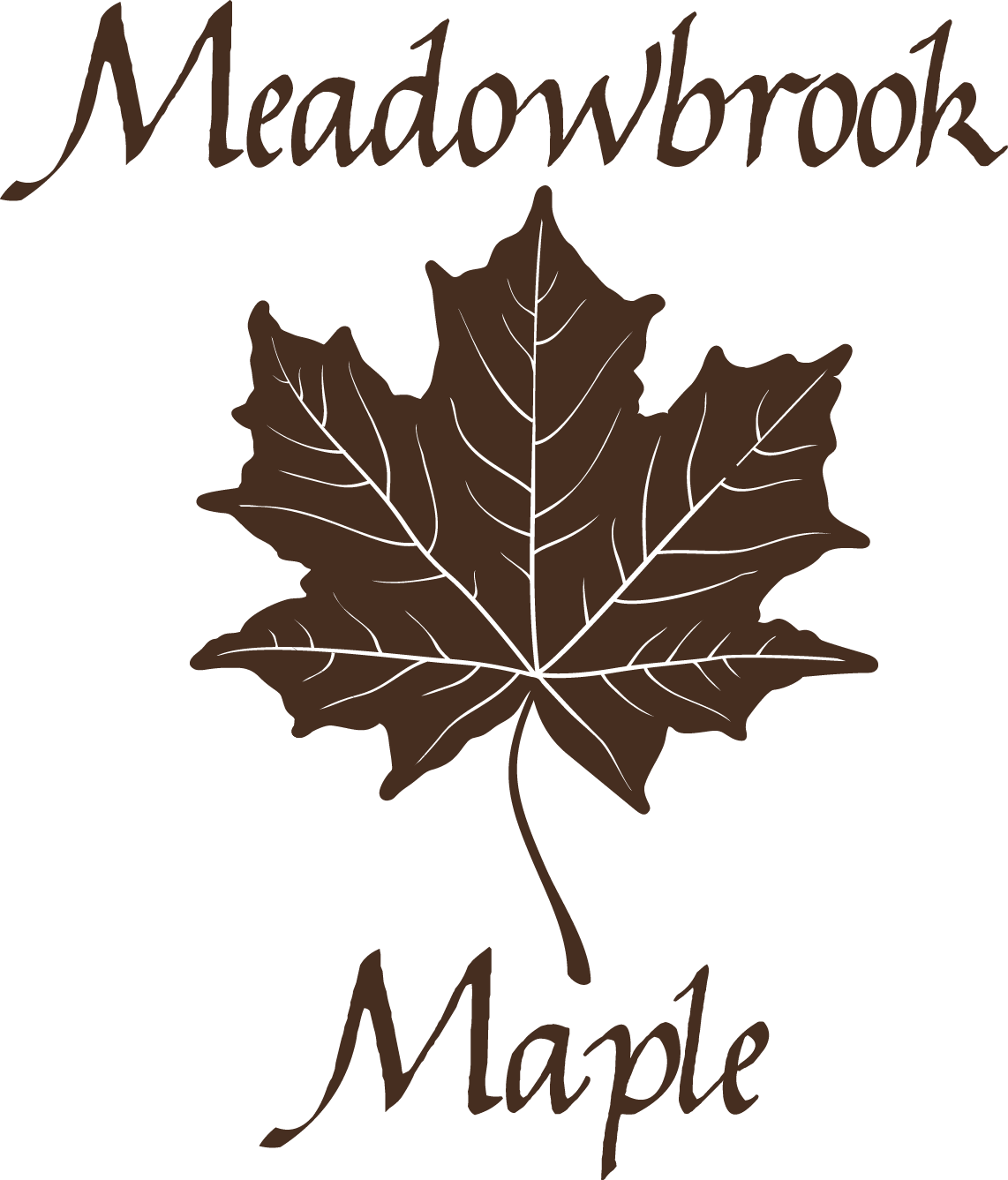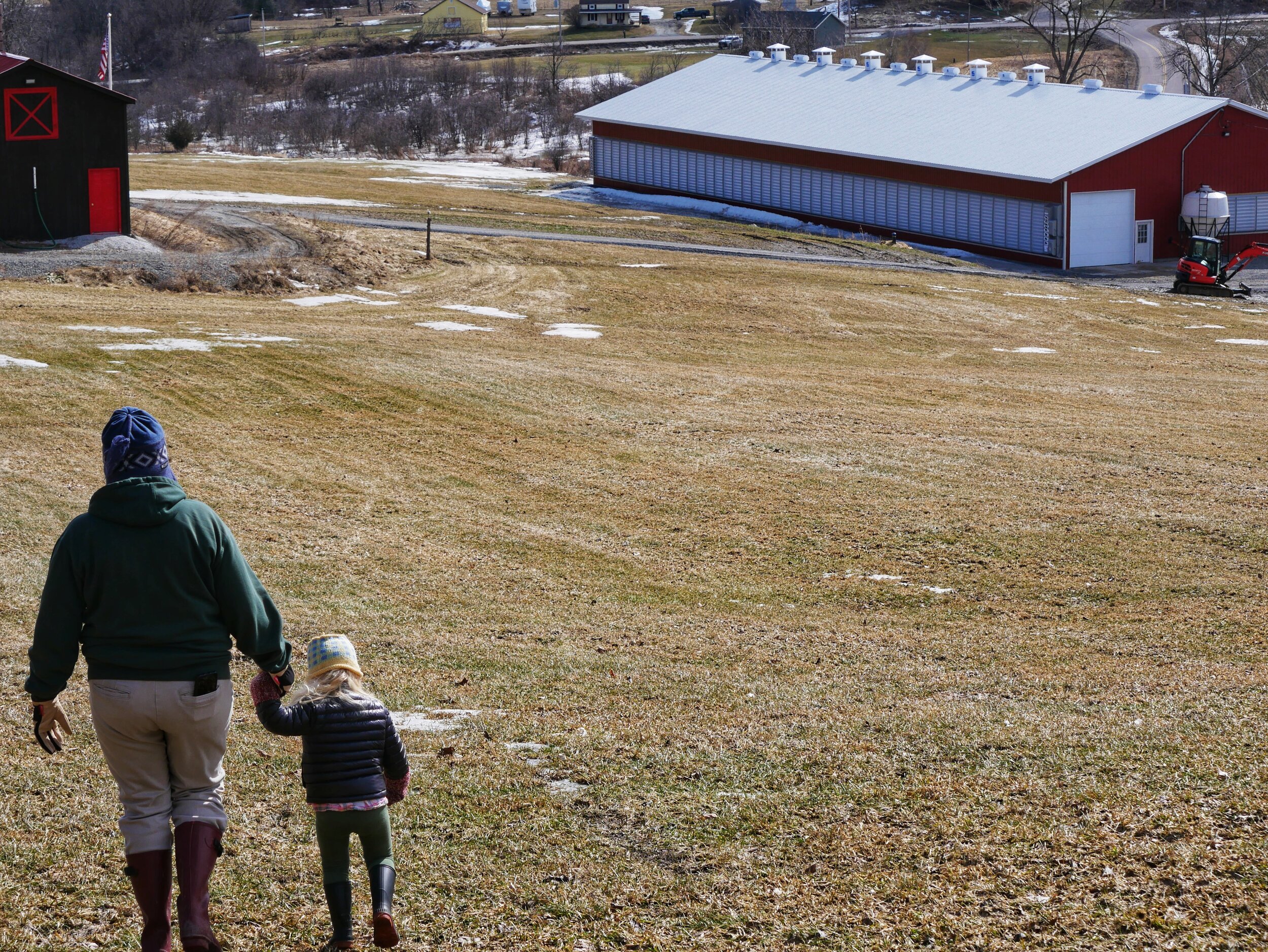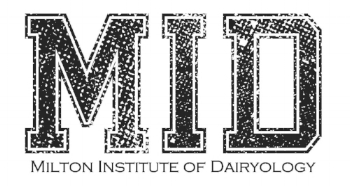Robert & Bunny Richards established Meadowbrook Acres Dairy Farm in 1958 in Milton, Vermont. Today, the second and third generations continue to make high-quality milk while caring for the land.
Dairy farming is a big part of what makes Vermont such a special place. For generations dairy farming has made it possible for families like ours to work alongside each other while contributing to something bigger than ourselves.
Whether tending our fields or feeding our animals, it’s our job to make food responsibly and leave this land better than we found it - because that’s what it means to be a Vermont dairy farmer.
Over 60% of the milk that is produced in New England is made by Vermont dairy farms. We’re dedicated to providing nutritious food that is good for the environment too. If there is one thing we want you to know it's that milk is a local food that is made with care. We are a member of the Dairy Farmers of America Cooperative of farmers who make milk for many of the local dairy products you pick up at the grocery store.
Teresa Richards and her granddaughter at the new freestall barn where cows roam freely and are grouped by age.
Eric Stebbins in the milking parlor with his sister and niece.
Our family farm
Meadowbrook Acres dairy farm in Milton, Vermont has been in operation for over 60 years through the hard work and dedication of three generations of family members - with the fourth generation now growing up on the farm.
When Eric Stebbins joined the farm in high school as the third generation, the older generation joked that he would be attending the "Milton Institute of Dairyology," in addition to his schooling. They even had shirts with a logo made. The joke holds a lot of truth. Our employees are highly skilled in machine operation, engineering, animal nutrition & health, and environmental science. It takes a lot of ingenuity to be a dairy farmer.
Donnie Richards, farm owner and second generation to run the farm.
From left to right: farm owners Mike Richards, Donnie Richards, and Eric Stebbins.
Our cows
Our 200 cows are like family members, and we treat them with respect. We have a freestall barn where our milking cows can walk around, eat, drink, and rest whenever and wherever they choose. Our cows are milked twice a day. On average, cows spend about 12-14 hours a day resting, 2-4 hours hanging out and socializing, 3-5 hours eating, and an hour or less in the milking process.
Our heifers (teenagers of cows, not yet milking) and our pregnant cows live outside in the fields next to our barn in the spring and summer. The ingredients in our cows diets varies by season, and includes grain that we purchase and a mixture of grass hay, alfalfa hay, as well as corn and grass silage that is all grown on our farm.
Healthy cows make high-quality milk. We work with a veterinarian and a nutritionist to keep our cows happy. Like humans, our calves and cows receive regular check-ups, vaccinations and prompt treatment if they are ill. If a cow becomes sick and natural treatments aren’t working, she will receive medicine so she can get better. Her milk is separated and thrown away at the farm so that it does not enter the food supply. All of our milk is tested at our farm when it's picked up by the milk truck, and again at the processing plant for antibiotics. Any milk that tests positive cannot be sold to the public. It is discarded, and the farmer is fined. Our goal is always to keep our cows healthy and to make sure that milk is safe.
"If you don't treat the cows good, they won't treat you good. We talk in our funny voices to them, it's almost like they're smiling back at us" — Donnie Richards.
Protecting the environment
Our goal is to produce nutritious food for a growing population in a way that is sustainable for our environment. We care for over 600 acres of land close to Lake Champlain, and we believe that agriculture is the best way to protect our land. Developed land has four times the potential for runoff than agricultural land, which is why farms are so important.
We focus on caring for our fields in a way that will keep nearby waterways clean, create organic matter in the soil, hold water, and prevent soil from leaving the field through erosion.
We use an app on our phones called to track the nutrients we put on our fields to make sure we're applying the right amounts of manure in the right spots.
Some fields need less than others. We also have a certified nutrient management plan that is overseen by local government and environmental experts.
Manure is a natural fertilizer with important nutrients for plant growth that we highly value. It also reduces our need to use chemical fertilizer, just like you might want to do on your garden. Our neighbor in Fairfax at Copper Hill Farm is featured in a short video about how the nutrient management app works.
We also plant cover crops, like winter rye, on our fields in the fall, after the corn is harvested on the same fields. Cover crops are like a protective blanket for the soil during the winter and help the soil to retain water and prevent erosion. They also help sequester carbon and increase healthy organic matter in the soil. Learn more about cover crops in this video from UVM Extension and local farmer watershed groups.
Consider this: if all 80,000 acres of Vermont land that is used to grow corn had a cover crop, the carbon sequestration would be the equivalent to removing over 55,000 cars from the road!
Follow us on Facebook to get regular updates from the farm and stay in touch!












